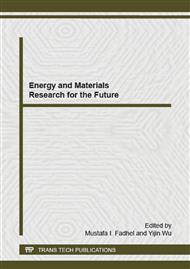p.3
p.8
p.12
p.18
p.22
p.26
p.31
p.38
Hypotheses about the Tools Origin of Textile Materials
Abstract:
As high polymer materials, textile materials are easily to be carbonized and then disappear, so it is almost impossible to study the origin of it from physical evidence. Based on the objective historical facts, through analysis and inference, the paper believed that textile materials, as soft materials, are better than stone tools in the aspects of obtaining, making, functions and uses. Two hypotheses about the origin of textile materials are proposed. The first is that textile materials originate from tools, and the origin time of it is not later than stone tools. The second is that signs and clothing application of textile materials both evolve from its usage as tools, so the origin sequence of textile materials is tools, signs, and clothing.
Info:
Periodical:
Pages:
18-21
Citation:
Online since:
February 2015
Authors:
Keywords:
Price:
Сopyright:
© 2015 Trans Tech Publications Ltd. All Rights Reserved
Share:
Citation:


